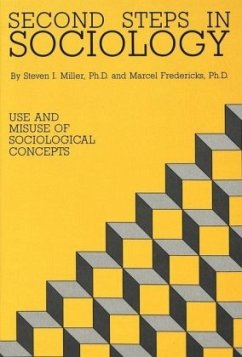This text is directed to undergraduate students in sociology. Its focus is towards developing critical thinking skills. It accomplishes this task by systematically introducing students to a series of topics that can be used to critically analyze the concepts and arguments commonly used in beginning courses. The text begins by showing students the way common sociological concepts can be classified and defined. Using the context of conceptual analysis drawn from what is known as "ordinary language analysis" in philosophy, the student is taught how to apply these techniques to a variety of sociological perspectives. This foundation is then complemented by introductory chapters which deal with deductive and inductive modes of reasoning as well as several examples of informal fallacies. The final chapter focuses on the construction of conceptual models using illustrations from medical sociology. All of the chapters attempt to incorporate concrete sociological examples.
"It's not often that a classroom reader is published which combines both scholarship and heuristic utility. This is such a book. It strikes at the heart of two of the biggest and recurring problems faced by young students of sociology - the problem of critical thinking and the problem of distinguishing connotation of language."
"We can hardly expect our students to appreciate the significance of critical evaluation of symbolic culture, if we ignore it in our teaching. Teachers, who choose the seemingly more difficult road of taking this issue on, will find that both they and their students are rewarded many times over for their efforts. I can think of no better way to approach these issues/problems than by the application of this text in the introductory sociology classroom. Congratulations on a fine piece of work which will certainly become a staple in my introductory sociology classes." (David Iaquinta, University of Wisconsin)
"We can hardly expect our students to appreciate the significance of critical evaluation of symbolic culture, if we ignore it in our teaching. Teachers, who choose the seemingly more difficult road of taking this issue on, will find that both they and their students are rewarded many times over for their efforts. I can think of no better way to approach these issues/problems than by the application of this text in the introductory sociology classroom. Congratulations on a fine piece of work which will certainly become a staple in my introductory sociology classes." (David Iaquinta, University of Wisconsin)

